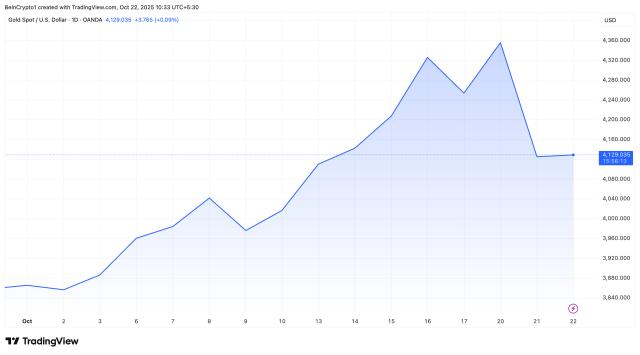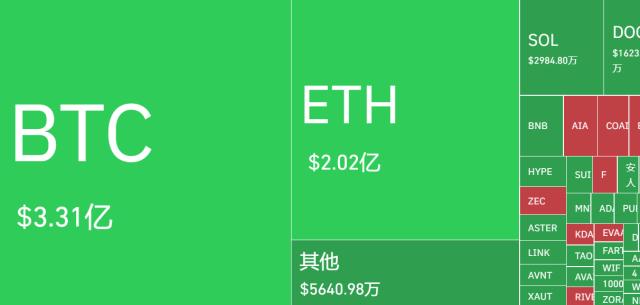Perpetual futures failed as hedging tools during the October 11 crash.
Auto-deleveraging, oracle errors, and liquidity collapse turned safe short positions into liquidation triggers, wiping out even delta-neutral strategies.
Options and structured products are emerging as better protection tools.
Deribit’s BTC put volumes tripled after the crash, while exchanges like LBank introduced new risk isolation frameworks to prevent systemic liquidations.
The future of hedging depends on transparent and resilient systems.
True risk management now means building multi-layered infrastructure—where margin, liquidity, and risk engines remain stable even in extreme markets.

In the early hours of October 11 2025, crypto markets faced another record-breaking liquidation wave. Within hours, more than $19 billion in leveraged positions were wiped out. Bitcoin dropped from $126 000 to below $106 000, while Ethereum plunged from $5 000 to around $4 100. The last liquidation of this scale was during the FTX meltdown.
But this time, the story was different. Many of the liquidated positions weren’t speculative longs—they were hedges. Traders who believed their portfolios were safe under “delta-neutral” strategies watched both sides of their trades collapse.
The instrument they trusted most—the perpetual futures contract—became the very thing that failed them.
WHEN “HEDGING” BECOMES A RISK
The October 11 crash pushed every trader to their limits. Data from CoinGlass and Kaiko show about $19 billion in leverage was liquidated, with nearly 60% coming from perpetual futures. Designed as efficient risk tools, these contracts instead became catalysts for contagion.
The first failure came from the auto-deleveraging mechanism (ADL). To prevent negative balances, exchanges automatically close positions starting with those most profitable and highly leveraged. During the crash, that meant many profitable short hedges were forcibly closed, leaving their long exposures unprotected. A Hong Kong-based quant recalled, “Our BTC perp shorts were ADL-ed instantly. Once they were gone, our spot longs lost 30% in minutes.”
The second blow was liquidity evaporation. As volatility spiked, market makers pulled their bids. Kaiko reported that order-book depth fell more than 90% within minutes. Even traders who wanted to close positions couldn’t find liquidity. LBank’s internal data showed its depth slippage rose only 18% that night—far below the 74% industry average—highlighting how stable liquidity can mean survival when others break.
The third factor was oracle failure and cross-margin contagion. On Binance, Wrapped Beacon ETH (wBETH) crashed nearly 90% as oracle prices froze, triggering mass liquidations for accounts that used it as collateral. Because cross-margin pools share risk, one asset’s collapse cascaded through entire portfolios. As Odaily put it, “Perpetual hedging is built on trust—the trust that engines, oracles, and risk systems work. When that trust fails, the hedge fails with it.”
THE ILLUSION OF SAFETY
In theory, perpetuals balance long and short demand through funding rates. In practice, that same mechanism becomes a trap when sentiment flips.
On October 11, funding rates swung from +0.01% to –0.10% in hours. Shorts that normally earn interest started paying it instead, turning hedges into losses. Ethena’s USDe—a stablecoin backed by staked ETH and short perpetuals—lost its peg as negative funding drained returns. For a moment, it traded as low as $0.65 on major exchanges.
Even well-designed delta-neutral models couldn’t escape the structural flaws of perps. Traditional hedging spreads risk across independent markets. But in crypto, both the hedge and exposure often sit within the same exchange and margin pool. When the system breaks—through ADL, oracles, or liquidity collapse—both sides fall together. As one fund manager joked, “It’s like buying fire insurance from a company that rents an office in your building. If the building burns, the insurer burns too.”
THE NEW WAVE OF HEDGING TOOLS
After the crash, traders began rethinking what “hedge” really means. Perpetuals still have their place for leverage and speculation, but not as reliable insurance. A new generation of instruments is emerging to fill the gap.
First, the return of options. After October 11, Deribit’s BTC put volumes tripled as funds sought protection. Options provide asymmetric payoffs: losses are capped at the premium, while downside gains expand sharply. Unlike perps, options can’t be ADL-ed and are immune to funding swings. The trade-off is cost—premiums erode returns in quiet markets—so funds often use risk reversals (buying puts, selling calls) to balance expense and coverage.
Second, structured and delta-neutral products. Projects like Ethena, Pendle, and Katana automate rebalancing between collateral and hedge positions to stabilize yields. They perform well in stable markets but remain vulnerable in crashes. USDe’s depeg showed that even sophisticated models depend on perpetual liquidity. Some exchanges are introducing better frameworks. LBank’s “Edge Protection” separates risk pools, preventing one asset’s collapse from triggering account-wide liquidations—a design praised by several analysts after the crash.
Third, the classic spot-plus-stablecoin approach. Many asset managers returned to the simplest form of defense: selling a portion of crypto holdings into USDT or USDC. On-chain data shows Tether and Circle transfers spiked 62% and 48% that night. This “passive hedge” sacrifices upside but eliminates liquidation risk, proving effective when chaos hits.
REBUILDING TRUST
The real debate after October 11 isn’t which tool works best—it’s how to make sure hedges actually work. The collapse of perpetuals revealed a deeper structural issue: risk engines overloaded, market makers vanished, oracles lagged, and ADL chains spiraled. It wasn’t strategy failure; it was ecosystem failure.
Exchanges are now rebuilding from within. Platforms like LBank and Hyperliquid are redesigning their risk systems for transparency, letting users monitor ADL priority and margin health in real time. LBank also plans to separate margin management from risk evaluation entirely, reducing the chance of systemic liquidation.
At the same time, institutional money is flowing back into options. CME’s Bitcoin options open interest hit a record $8 billion in mid-October, reflecting renewed demand for real hedging instruments.
The October 11 crash didn’t end an era—it began a new one. It reminded the market that perpetuals aren’t a firewall; they’re a milestone on the way to mature risk infrastructure. True hedging isn’t just about holding an opposite trade—it’s about building transparent, resilient systems that survive when everything else breaks.
In a world where chaos can strike overnight, real protection isn’t just a position. It’s the system itself.
〈When Hedging Fails: Lessons from the October 11 Crash〉這篇文章最早發佈於《CoinRank》。







